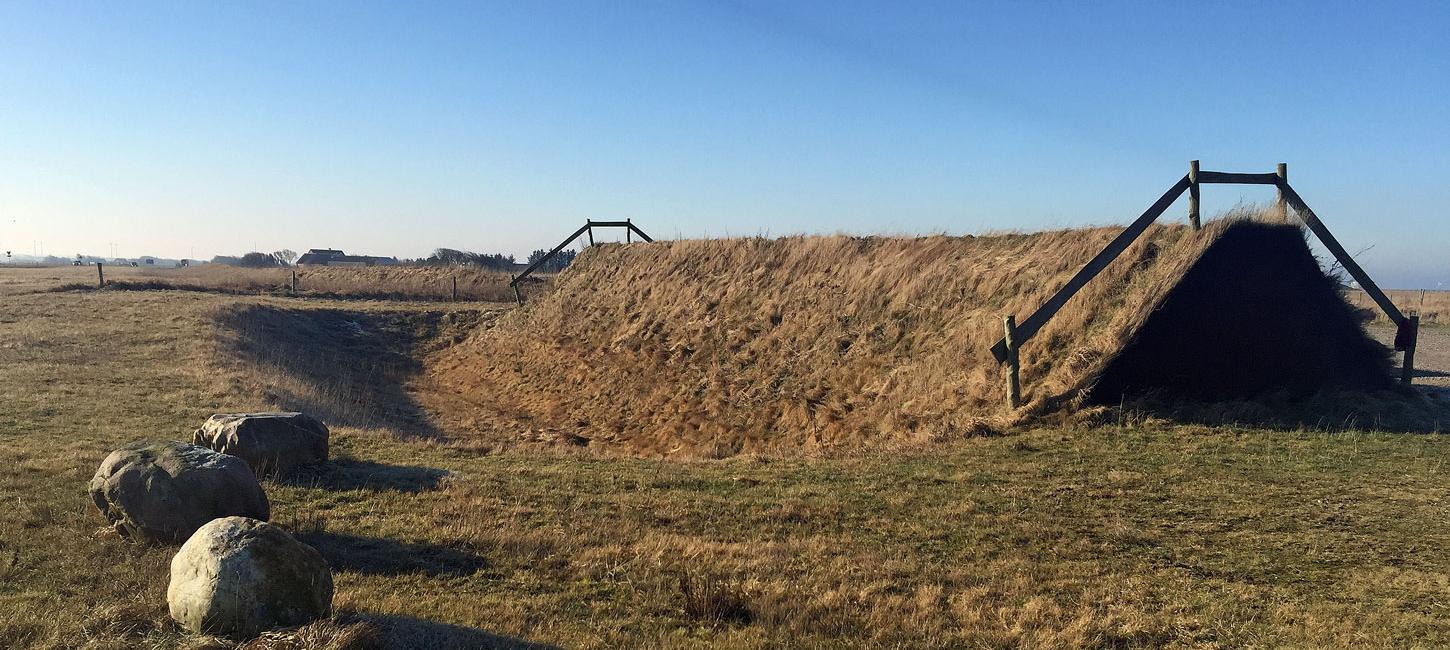
Rammedige
Rammedige, located south of Lemvig and quite close to the west coast, is an earthwork from the Iron Age that is believed to have been constructed in the period between 100 and 400 A.D.

Photo:Geopark Vestjylland
Earthwork From the Iron Age
The rampart that was originally up to 4 m wide and 2 m high runs north-south and has a deep, broad trench along its eastern flank. The rampart was originally between 2 and 2.5 km long, but only about 1650 m now exist. This part is, however, preserved.

Photo:Lemvig Kommune
Protection From Invaders From the Landward Side
This defensive rampart was built between two marshy areas, and there was a moat and other defensive constructions on the eastern side. Together the rampart, moat and marshy areas prevented potential invaders from entering a large area behind Rammedige extending to the west coast. Behind the protective wall people could live in peace, safe from invaders from the landward side.

Photo:Geopark Vestjylland
Numerous Barrows at Rammedige
The numerous barrows west of Rammedige belong to the ancient road system. There used to be a total of 60 barrows here. The old road was probably still in use when the Rammedige earthworks were built and they would have blocked the road. During excavation carried out by Holstebro Museum in 2002, a series of rows of round holes were found on the eastern side of the rampart. Similar rows of holes have been found elsewhere in Denmark, but this is the first time where they are associated with a rampart. The purpose of the holes is a matter of debate, but it seems likely that at Rammedige they were for a defensive construction.

Photo:Geopark Vestjylland
Reconstruction
In 2011 a full-scale model of 30 m of the rampart and trench was built, and the continuation of the now removed part of Rammedige was marked by a series of posts. There is a parking place and informative posters here. Rammedige is now part of the National Cultural Heritage.

Photo:Geopark Vestjylland
Relationship to the Aspiring Geopark
Rammedige will be one of the significant places to visit on the planned “experience route” along the ancient road. An annual Viking market is held here, run by a large group of volunteers with support from Lemvig municipality. The geopark will support this by participating in the Viking market and providing information material.